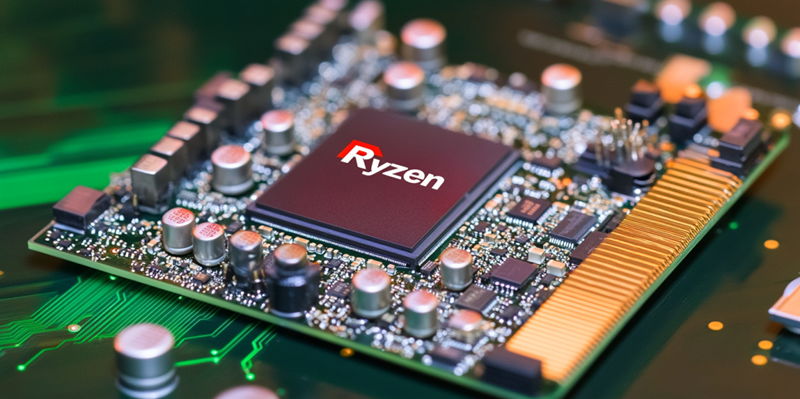In a bid to capture the entry-level laptop market, AMD is set to launch its refreshed "Ryzen 200" series APUs, which form part of the Hawk Point lineup and aim to tackle the performance gap in the budget segment. AMD’s strategy, renowned for revamping existing CPU lineups to make them more appealing, now extends to the Ryzen 200 series. These new APUs are based on the same Zen 4 architecture as the existing Hawk Point CPUs, though with minimal changes intended to refine performance, particularly in the realm of AI capabilities.
The Ryzen 200 series is anticipated to feature models such as the Ryzen 7 255H and Ryzen 7 260H. These new additions are, in essence, refreshes of the Ryzen 7 8745HS and Ryzen 7 8845HS APUs, respectively. The primary upgrade expected in these refreshed models surrounds AI performance enhancements, specifically in AI TOPS. Despite these improvements, the core counts and integrated GPU (iGPU) configurations are likely to remain consistent with what was offered in the previous models. This approach illustrates AMD’s strategy of providing incremental enhancements to meet the ongoing demands of the budget market.
Targeting Low-to-Medium-End Workloads
The significance of the Hawk Point refresh lies in its potential to enhance AMD’s presence in devices tailored to handle low-to-medium-end workloads, particularly in handhelds and mini-PCs. While the Ryzen 200 series may not command the same level of excitement as its more advanced Phoenix APU counterparts, its impact in these specific market segments could be substantial. The competition is expected to be tight, with the Ryzen 200 series positioned to rival Intel’s similarly named Core Ultra 7 CPUs. However, this similarity in naming could potentially lead to some confusion among consumers as they navigate their options within the budget market.
AMD’s emphasis on low-to-medium-end devices with these APUs could contribute significantly to the company’s market share in handhelds and mini-PCs. The strategy reflects AMD’s understanding that incremental refinements and consistent performance can attract a dedicated user base even without dramatic innovations. By focusing on practical improvements like enhanced AI performance in the Ryzen 200 series, AMD addresses a specific niche within the broader tech landscape, ensuring its relevance and competitiveness in the entry-level CPU market.
Ongoing Strategy and Market Launch
To target the entry-level laptop market, AMD plans to release its revamped "Ryzen 200" series APUs, part of the Hawk Point lineup, aiming to bridge the budget segment’s performance gap. Known for refreshing their CPU lineups to enhance appeal, AMD now focuses on the Ryzen 200 series. These new APUs utilize the same Zen 4 architecture as the current Hawk Point CPUs, with slight modifications designed to boost performance, especially in AI capabilities.
The Ryzen 200 series is expected to include models like the Ryzen 7 255H and Ryzen 7 260H. These new models essentially refresh the Ryzen 7 8745HS and Ryzen 7 8845HS APUs. The major upgrade in these refreshed models centers on improved AI performance, notably in AI TOPS. Despite these advancements, the core counts and integrated GPU (iGPU) configurations are likely to remain similar to the previous versions. This strategy highlights AMD’s approach of making incremental enhancements to meet the continuous demands of the budget-conscious market, ensuring value without overhauling the existing technology completely.

